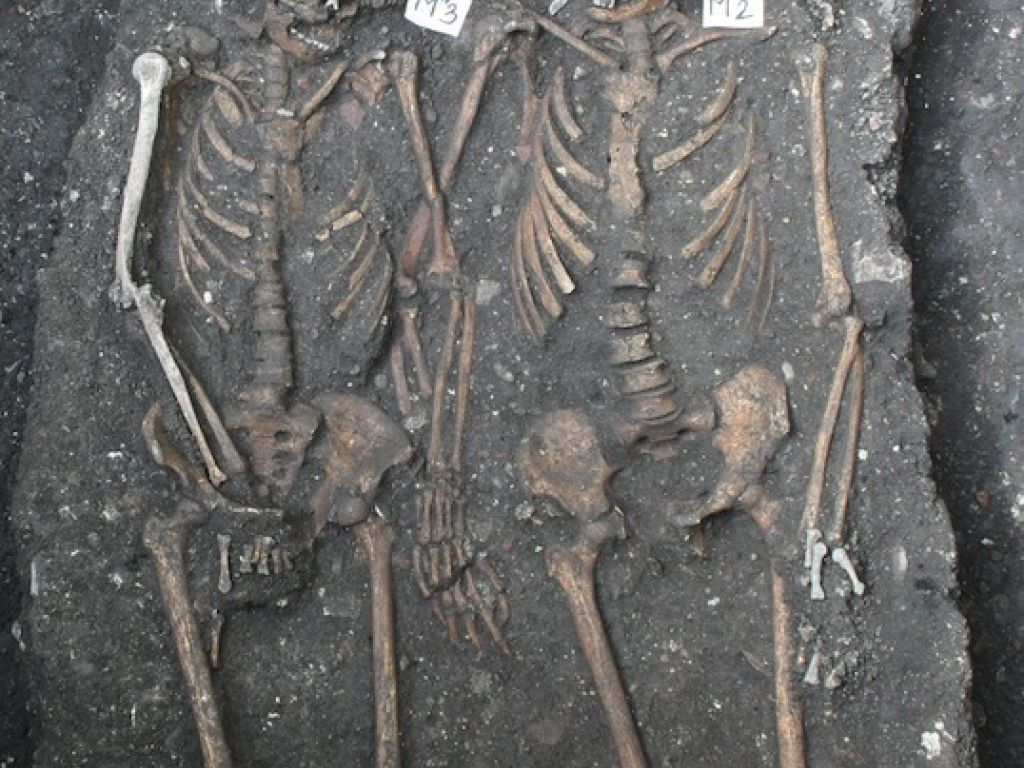Hominid love in the Cradle?

A pair of human skeletons, who appear to have died while holding hands and looking into each other’s eyes, was recently found during an excavation in Romania.
Adrian Rusu, the main researcher at the Cluj-Napoca Institute of Archaeology, told the Bucharest Herald that the couple were around 30 years old when they died. The man appears to have died in an accident that broke his sternum, while the woman, he says, “probably had a heart attack on finding out the news”.
While these skeletons date back to the Middle Ages – somewhere between 1450 and 1550 – they raise a question around the issue of love and monogamy among our early ancestors. We asked Dr Morris Sutton, post-doctoral researcher on stone artefacts from Swartkrans Cave, if there was any evidence to suggest that our early ancestors in the Cradle of Humankind experienced love or practised monogamy.
“The deep-time archaeological record of the Cradle area does not nor cannot yield evidence of any behaviours such as love,” he says. “We only have the fossils along with stone and bone tools.
“Additionally, the contexts of the archaeological finds in the Cradle area are all secondary. The material recovered from the caves is not in its original position, so individual activities related to the fossils are not possible.”
Sutton points out, however, that there have been studies done on a broader scale of hominin social behaviours in a group context, which provide an environment and social framework for the existence of love and monogamy.
“Many of these use other primate species as a sort of proxy for what hominin behaviour might have looked like,” he says. “Of course, we cannot necessarily base early human behaviour on other primate behaviour because all have followed different evolutionary lines. However, it is the best we have and thus comparisons are often made.”
It is important to remember that there were several different species of hominins on the Cradle landscape 2-3 million years ago; maybe as many as five. Sutton says these species would have had diverse behaviours and varied social group structures and interactions.
“Just looking at early Homo, some have suggested there was much variability in individual group behaviour as a result of changes in ecological and social pressures,” says Sutton.
There are theories around plasticity in the early development of human social structure as the individuals reacted to increased group size and more complex relationships. Other theories cite ecological factors as determinants of social structure, influenced by technological and behavioural innovations as well as external environmental change.
One study, in the International Journal of Primatology, suggests that male-female bonds may have been strengthened in Plio-Pleistocene hominin social groups because of the higher costs of reproduction faced by females. Demands placed on females’ bodies by reproduction meant they needed more nutrient-dense foods, which were difficult for them to acquire. This led to a reliance on males to source it for them, leading in turn to a strengthening of male-female bonds.
“While none of this research can prove for certain that early humans practised monogamy, it does seem that our early human social structure – influenced by pressures such as the environment, resource procurement and safety – gave rise to what we view today as modern human social behaviour.”
If you are interested in reading more about the evolution of human social structures, here are some resources:
- The ecology of social transitions in human evolution (Foley and Gamble)
- Fission-fusion and the evolution of hominin social systems (Grove, Pearce and Dunbar)
- Variation in the Social Systems of Extant Hominoids: Comparative Insight into the Social Behavior of Early Hominins (Malone, Fuentes and White)
- “A Papionin Multilevel Society as a Model for Hominin Social Evolution”, International Journal of Primatology, October 2012, Volume 33, Issue 5, pp.1165-1193.